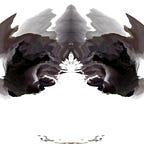The Proto-Sketching Method ✢
Week 03 | Nov 26–27
Thursday, November 26th
Yesterday our group was split between the textile workshop and the atelier where we continued to work on our concept/prototype. Those of us who were not in the workshop began the day with a quick refresher of the discussion from the previous evening. We had considered a wearable that attempts to engage the user in a conversation and provoke a self-reflection of their ever-changing emotional state. What this conversation looks like we’re not entirely sure at the moment. Of course technology cannot know exactly what you’re feeling, but emotions do manifest themselves physically. For instance your heartbeat goes up or you feel tension in certain areas of the body. So maybe the wearable is able to measure certain kinds of physical activity in the body, such as the heart rate, and it shares this information with the user. It’s aim is not necessarily to give meaning to the data, but to provide an interpretation which allows the user to become aware of and self-reflect on the physical manifestations of their emotions. The wearable would be similar to a friend who asks, “Hey are you okay?” or “What’s wrong?”
Because we are questioning what kind of relationship we have with our emotions, and we are looking to make a wearable that strengthens this relationship, we also discussed the different forms communication which take place in a relationship. For example, when you first meet someone you exchange the most basic info about yourself, like where you grew up, if you’re a coffee or a tea person, what you do for a living, etc. With time you also become more comfortable with each other and can share moments together in silence, because everything has been said. Sometimes you even argue. As we saw from our quick brainstorm there are many kinds of communication in a relationship, and this gave us the idea that the wearable could have different states—not just on/off.
At this point we felt it would be good to produce some very basic prototypes, exploring various ways in which the wearable could communicate with the user. In other words, what would be it’s language? By chance we discovered on Facebook that lululemon in the Niederdörfli was giving away free mannequins, so we picked two up, thinking they could be a good way to prototype and visualize our ideas. This actually led to a newly discovered method we like to call Proto-Sketching. Basically we rapid prototype the wearable on a mannequin, not focusing necessarily on functionality, but rather on material and the idea itself. This allowed us to consider questions such as, “Would it even be feasible to produce this?” or “What would the wearable language be?” Below you can see some of our first proto-sketches.
Friday, November 27th
Today we continued to prototype and proto-sketch, testing out a few new ideas we had. This included creating a feather-like textile that would make a subtle ripple-like movement across itself. We tested out a few different folding techniques as you can see in the figma frames below. Our last idea brought us back once again to working with air as a medium. The prototype used an air compressor, a balloon and plastic tubes; it was almost muscle-like, expanding and contracting as the air was pumped into the tube and then released.
We are definitely drawn towards using air as a medium, because it could somehow be used to represent the variation of breathing patterns you see with human emotion. For instance, you breathe sharply and quickly when you’re crying, and slowly and deeply when you’re relaxed. We’re not too sure how to work well with air, but we will mostly likely further pursue this medium next week. We still have to agree upon this direction as a group.
